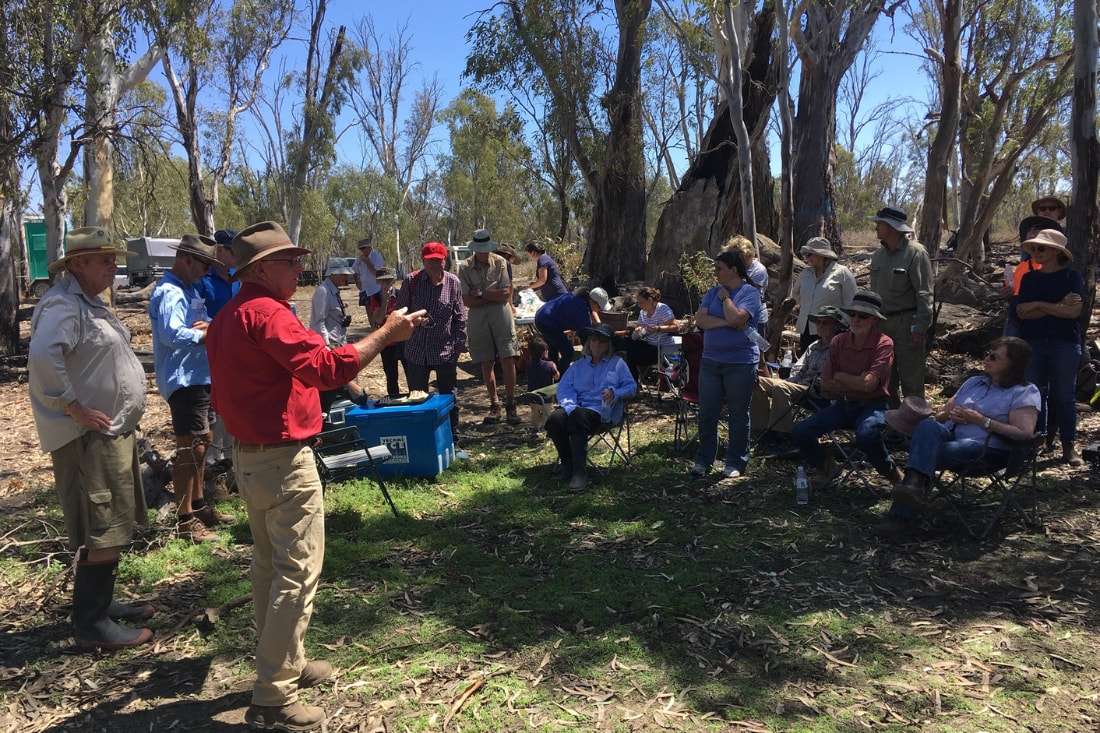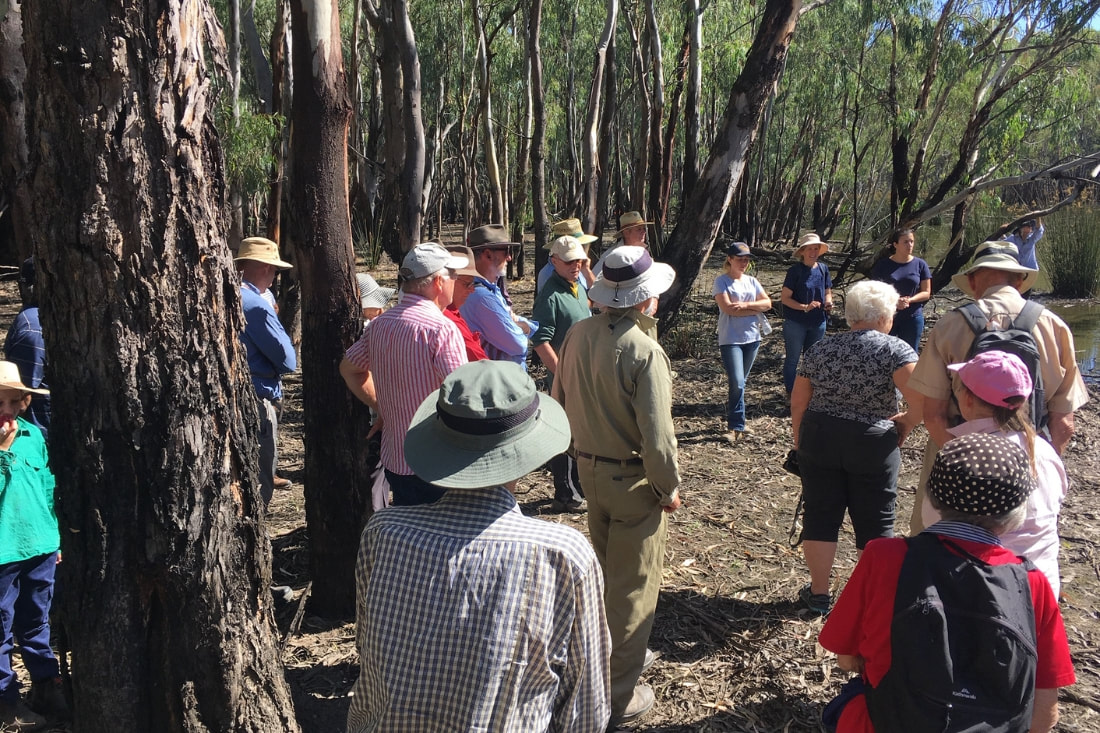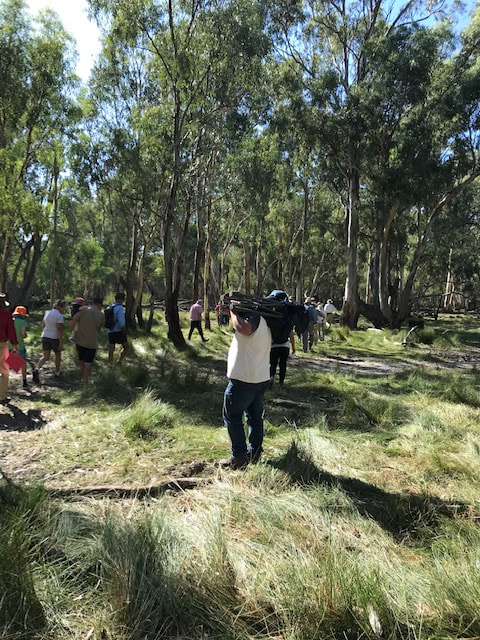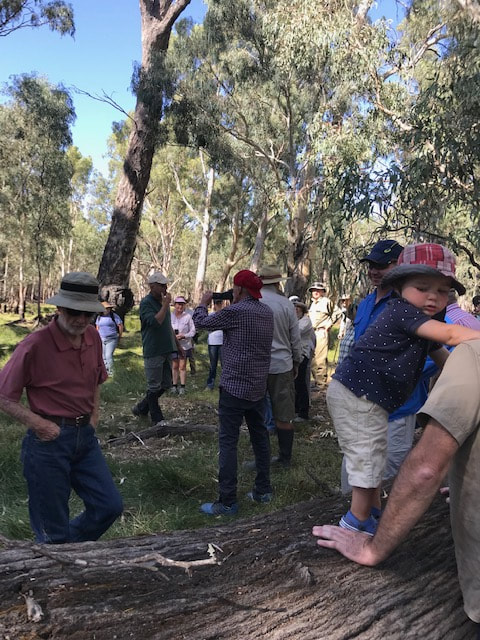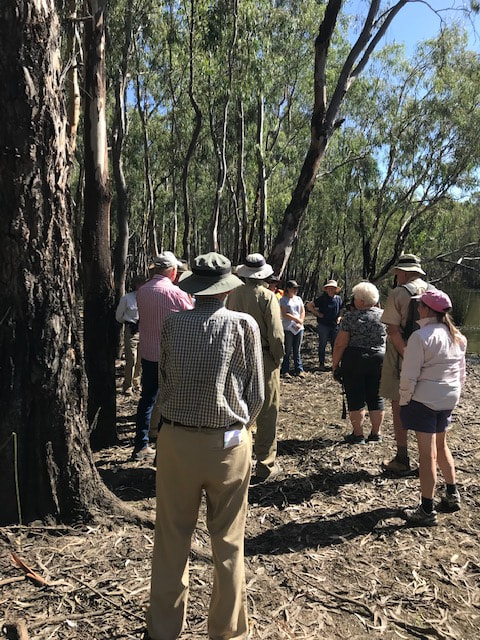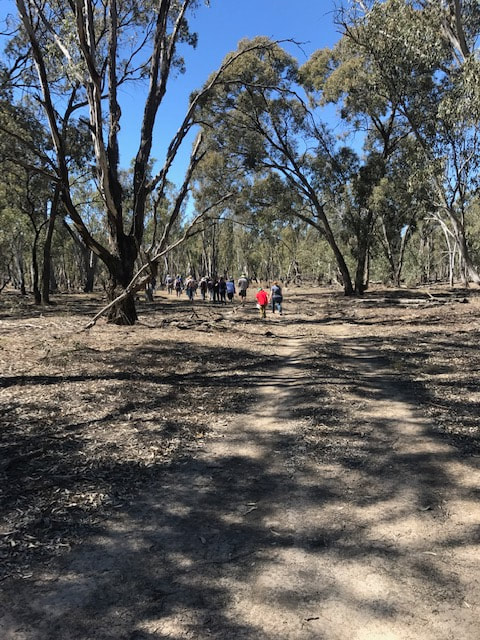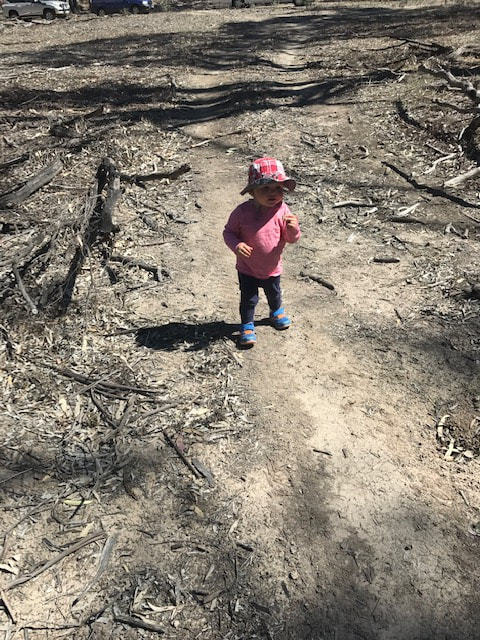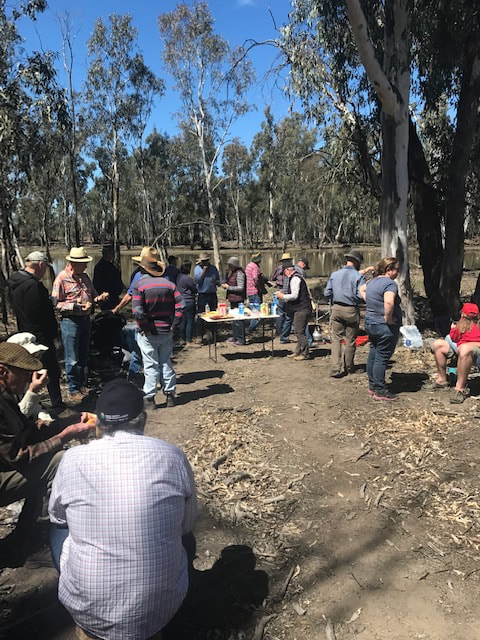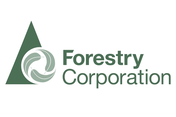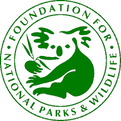About this tourTour date: 24th February 2019
Murrakool Land for Wildlife and WMLIG held a Pollack Swamp tour for the community to view a local environmental watering program and learn about it's objectives and outcomes. Dan Hutton, the environmental consultant managing this site in conjunction with Forestry Corp NSW, led the tour. Thirty five people took the opportunity to explore parts of the reserve.
Dan outlined that historically, the Pollack Swamp was 1.4m deep and had an impressive number of earth mounds where the traditional Barapa Barapa people lived along the water way. Carbon dating of charcoal within the mounds has dated the mounds as far back as 3000 years. The lagoon had a very active bird population with bee eaters, cormorants and even a sea eagle. |
|
Since regulation of the Murray River, the frequency and duration of flooding within the Pollack was dramatically reduced. During natural high flows, the 220ha swamp, fills from the Barbers Creek through a small channel called the Pollack Creek. Flood waters exit the Pollack via a capillary of flood runners rejoining the Barber Creek to the north. The water flowing via the Pollack Creek would typically cover the swamp in just 3-4 days.
Under the environmental watering program, water is delivered through the Bringan Trust channel infrastructure. Flows are delivered via the pumping station on the Murray River and travel 10km through open channel to the Pollack. In working with landholders, some of the channel constraints have been removed, enabling up to 25ML/day water delivery. The water delivery is much slower than a natural overbank event, with the last watering taking over 85 days to inundate 158ha. |
The project is a great example of how a well thought out project can deliver great environmental outcomes with the modest 2GL water use. The Pollack has long been recognised as a significant waterbird breeding site with historical breeding records of both the Eastern Great Egret Ardea modesta and the Intermediate Egret Ardea intermedia (both listed as Threatened Species in VIC) and many other species (Disher, 2000; Hutton, 2017).
While the waterbirds did return for the watering event, they did not actually breed. Temperature and the timing of watering are thought to be factors.
Guide Dan Hutton, spoke of average sightings of 10-15 red belly black snakes per day. He spoke of some of the challenges in managing the site with feral animals, and even the overpopulated red gum saplings which historically would have been drowned out with more frequent flood events. One option being considered to control the feral animals is to fence critical parts of the Pollack, although the fence will take some time as it has to limit feral animal traffic but allow natives such as Echidnas to pass through.
While the waterbirds did return for the watering event, they did not actually breed. Temperature and the timing of watering are thought to be factors.
Guide Dan Hutton, spoke of average sightings of 10-15 red belly black snakes per day. He spoke of some of the challenges in managing the site with feral animals, and even the overpopulated red gum saplings which historically would have been drowned out with more frequent flood events. One option being considered to control the feral animals is to fence critical parts of the Pollack, although the fence will take some time as it has to limit feral animal traffic but allow natives such as Echidnas to pass through.
Project partners
This event was a joint WMLIG & Murrakool Land for Wildlife initiative, made possible through funding from the Murray Local Land Services Catchment Action NSW Program and Murrakool Land for Wildlife.
Thank you to the landholders who allowed the group access to the Pollack via their property.
Thank you to the landholders who allowed the group access to the Pollack via their property.

